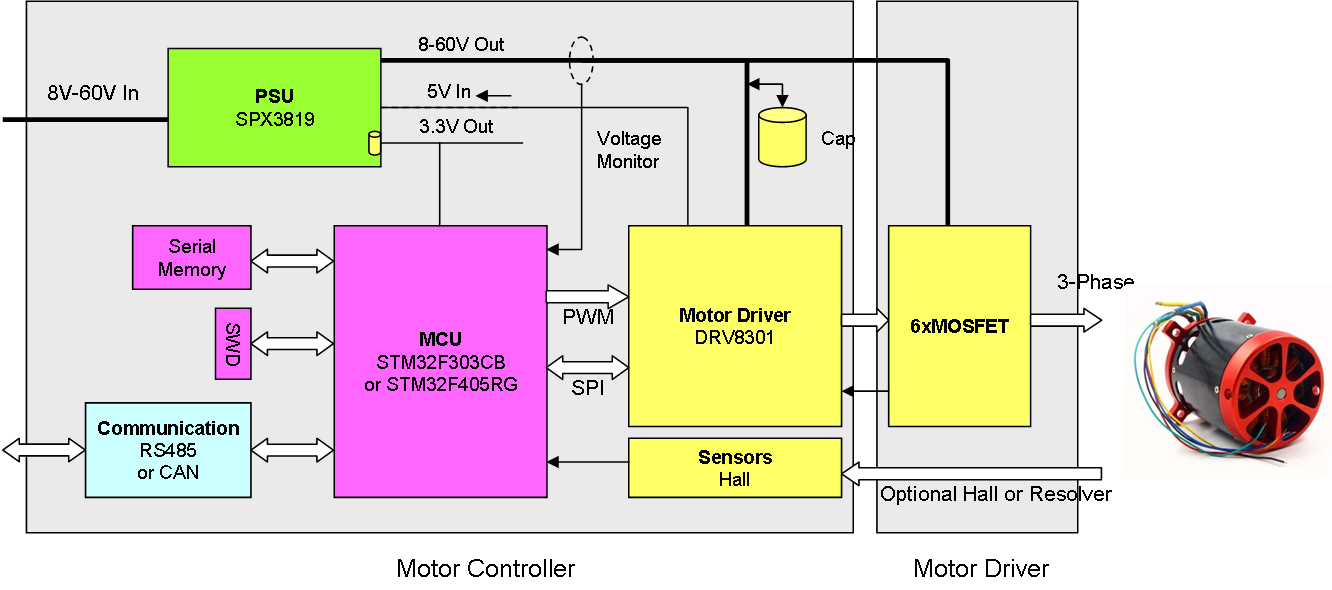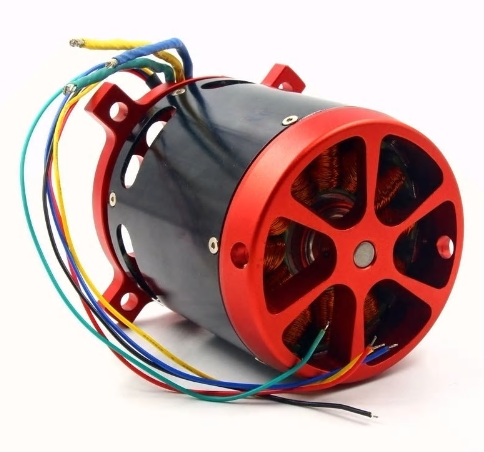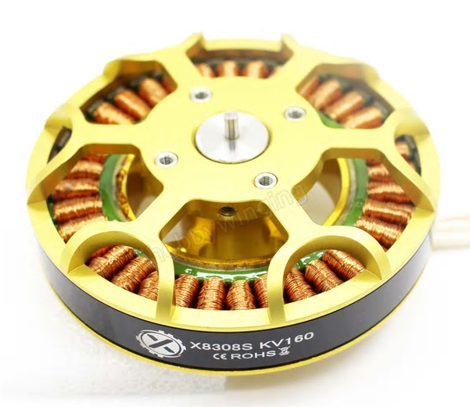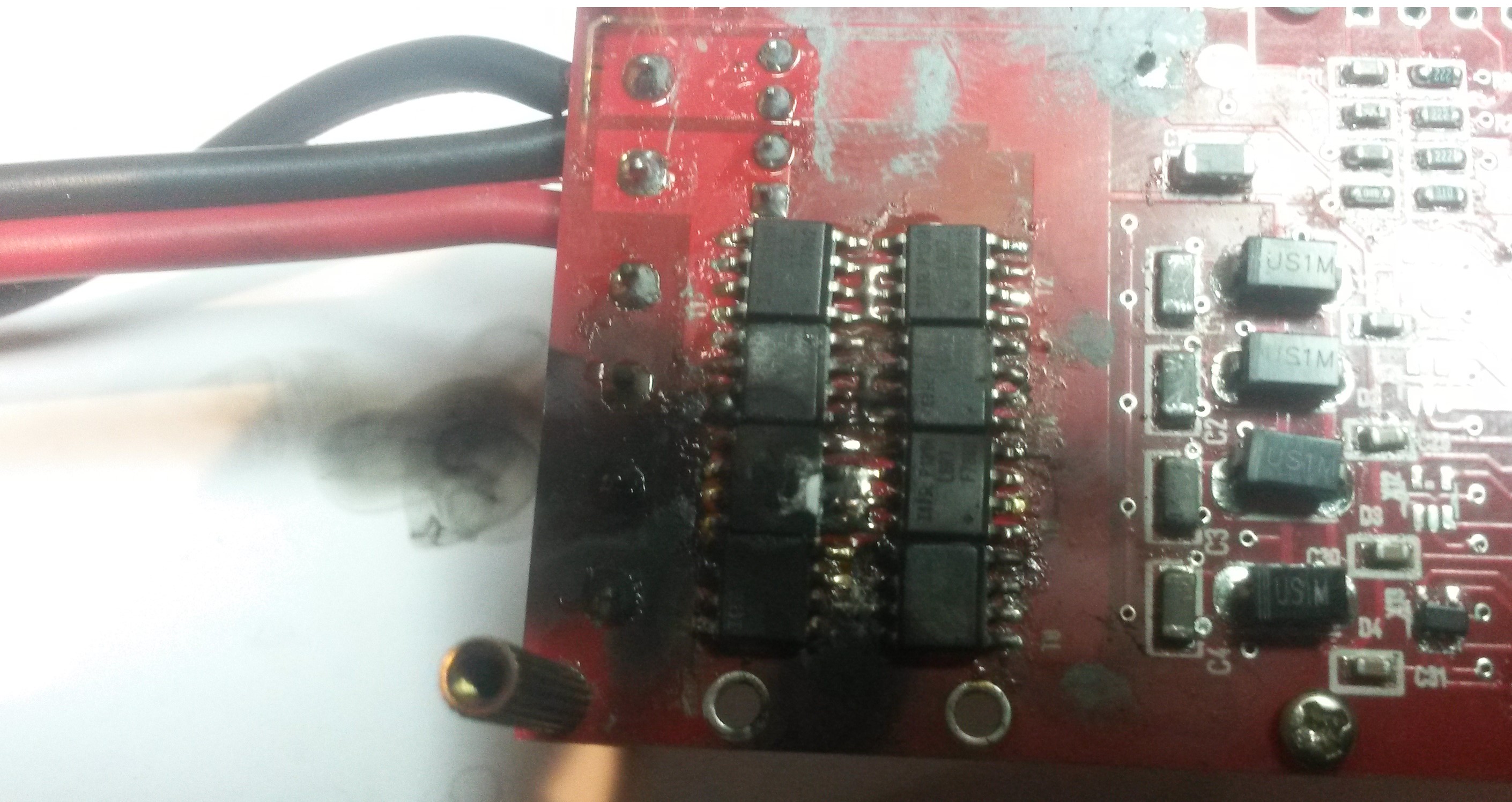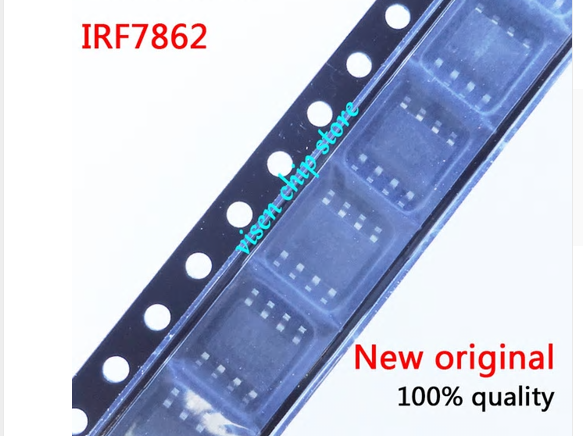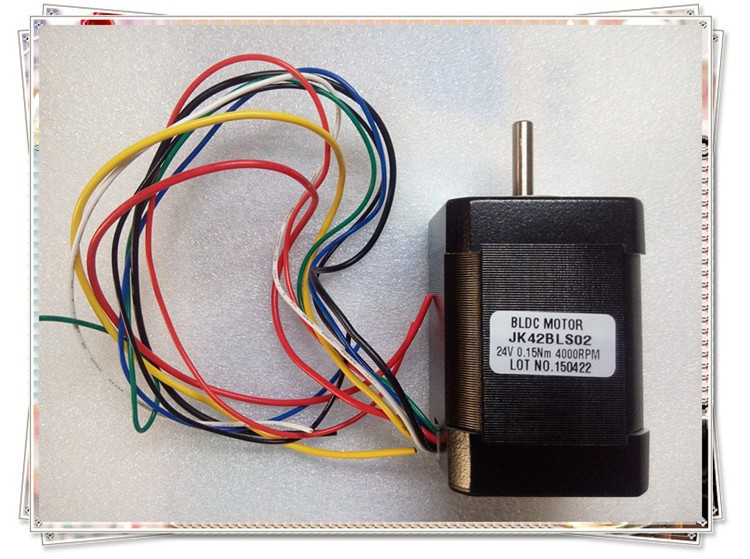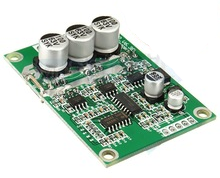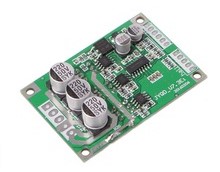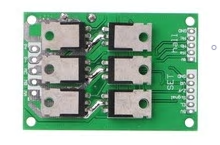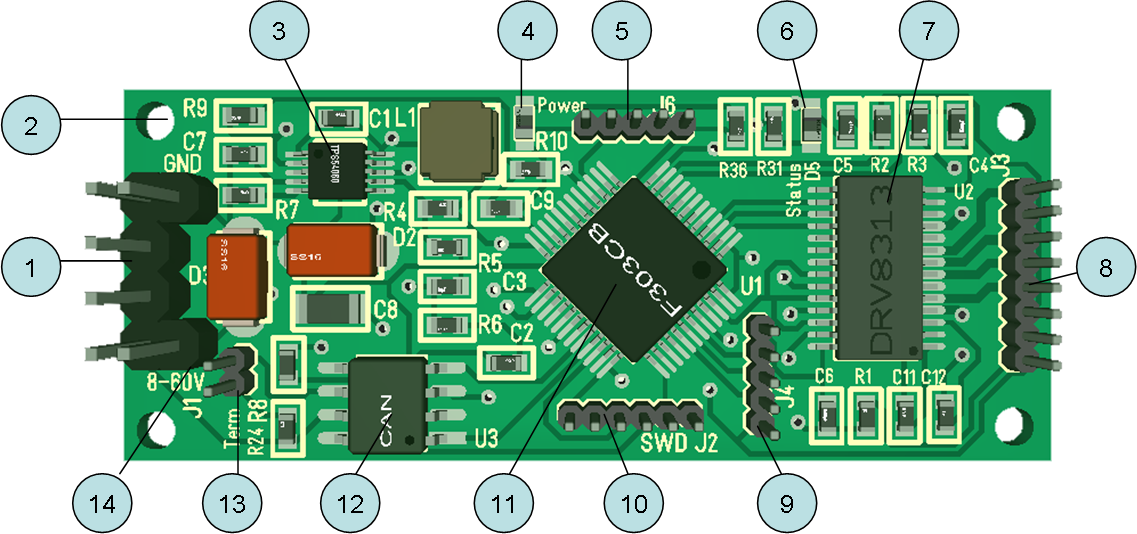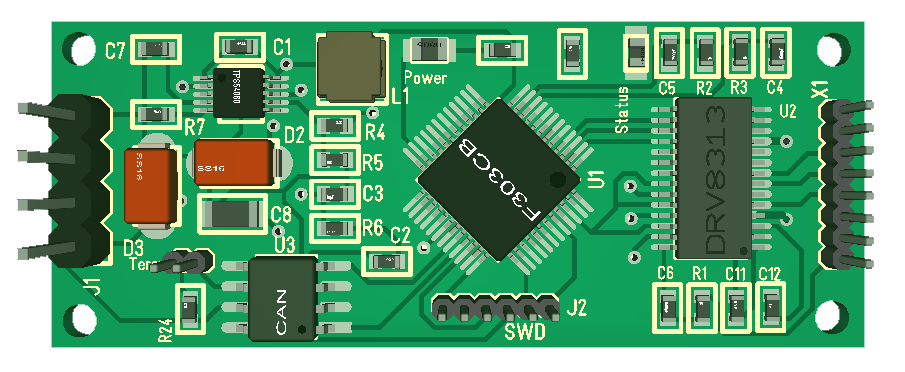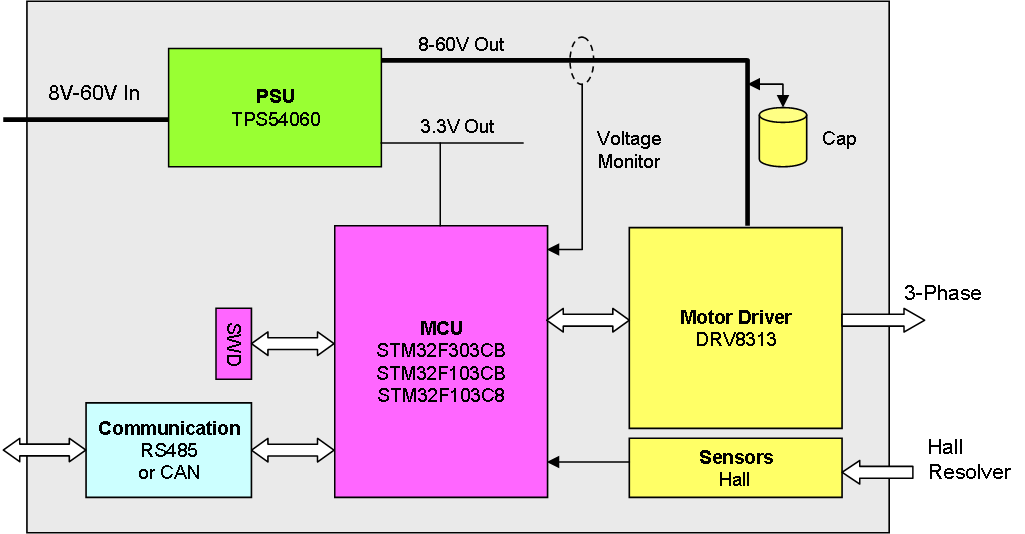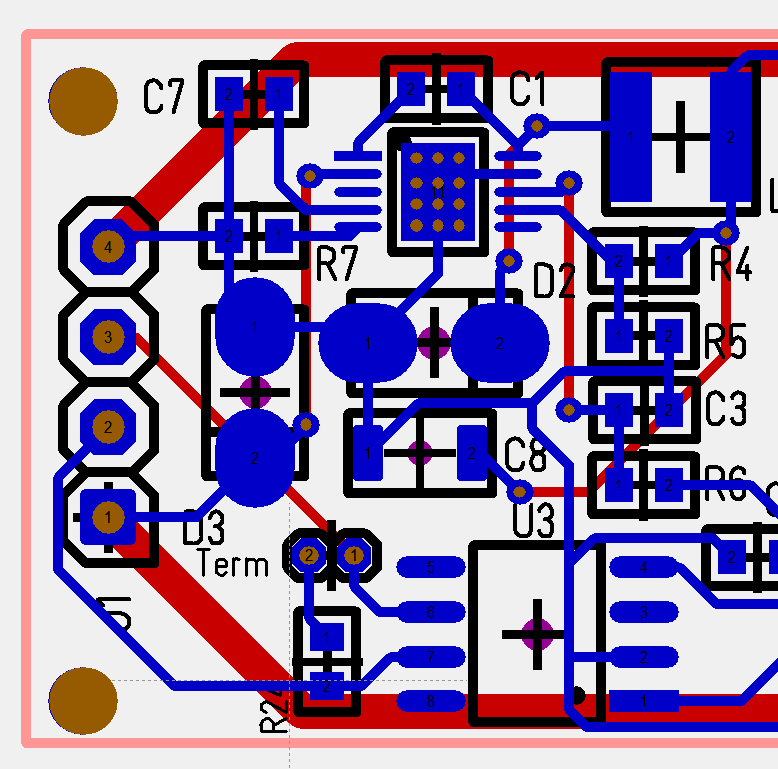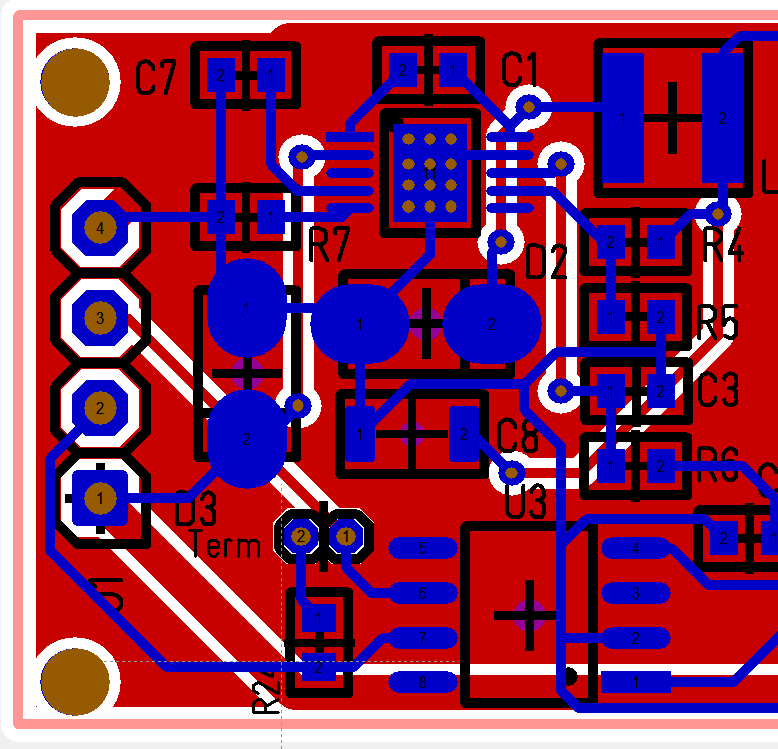The Half H-Bridge channels are working very well. I initially had some issues with IR2101 as I do not have pull-up’s. but moving to IR2103 this one have logic to prevent short-cut. This is however a weakness, so I need to add a pull-down resistor so I know the state of the MOSFET before the MCU starts. I will have a New batch of IRF7862 in a few days, this time from Arrow so I can continue testing.
The 0.33F Super-cap have proven it’s worth. It absorb spikes and keep the MCU alive for several seconds after a power down, giving us more than plenty time to detect power glitches.
It is a few mechanical things. I want to move on to micro JST connectors to save some space. It is also a bit tight between the screw connector and the Shunt’s, so I need an extra mm there. I am also looking into using a wired Shunt. I also need to change the drill holes to support the heat-sink I am using and I want to change how I mount capacitors.
The only remaining challenge is the high side current sensors and Hall Sensors. I might need 5V for both these as I move on. Current sensor is the main challenge. INA210 will only support 26V which is “ok” for this controller as we can limit it to 24V, but I would like a solution that is not so fiddly to put on and support higher voltages. I do however have a stack of INA210 so we can try these a bit more first.
This does however come at a trade-off as I have very little space available and INA210 is rather handy. As mentioned before I am doing high-side current sensor rather than the simpler low-side since this allows me to use each channel independently.
Returning to 5V I could actually replace the AMS1117-3.3 with SPX3819-5.0 and SPX3819-3.3. This is a SO23 package with 0.5A spec and I could use TPS54260 to increase input voltage to 60V and 2.5A for 12V. In fact I would like to change the design to become 60V or at least 48V, but MOSFET’s are limited to 30V.
